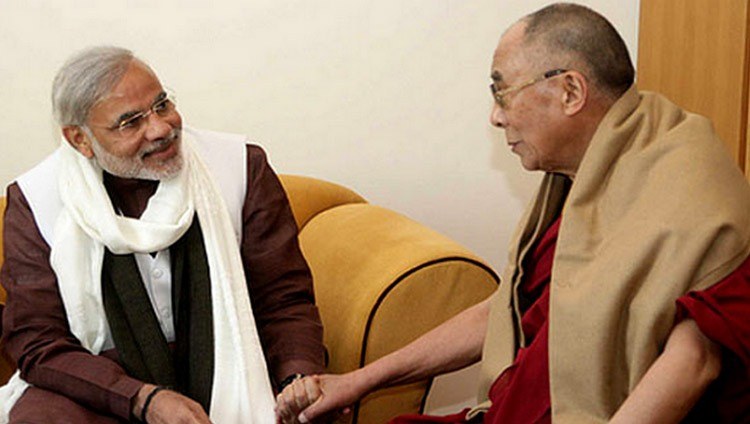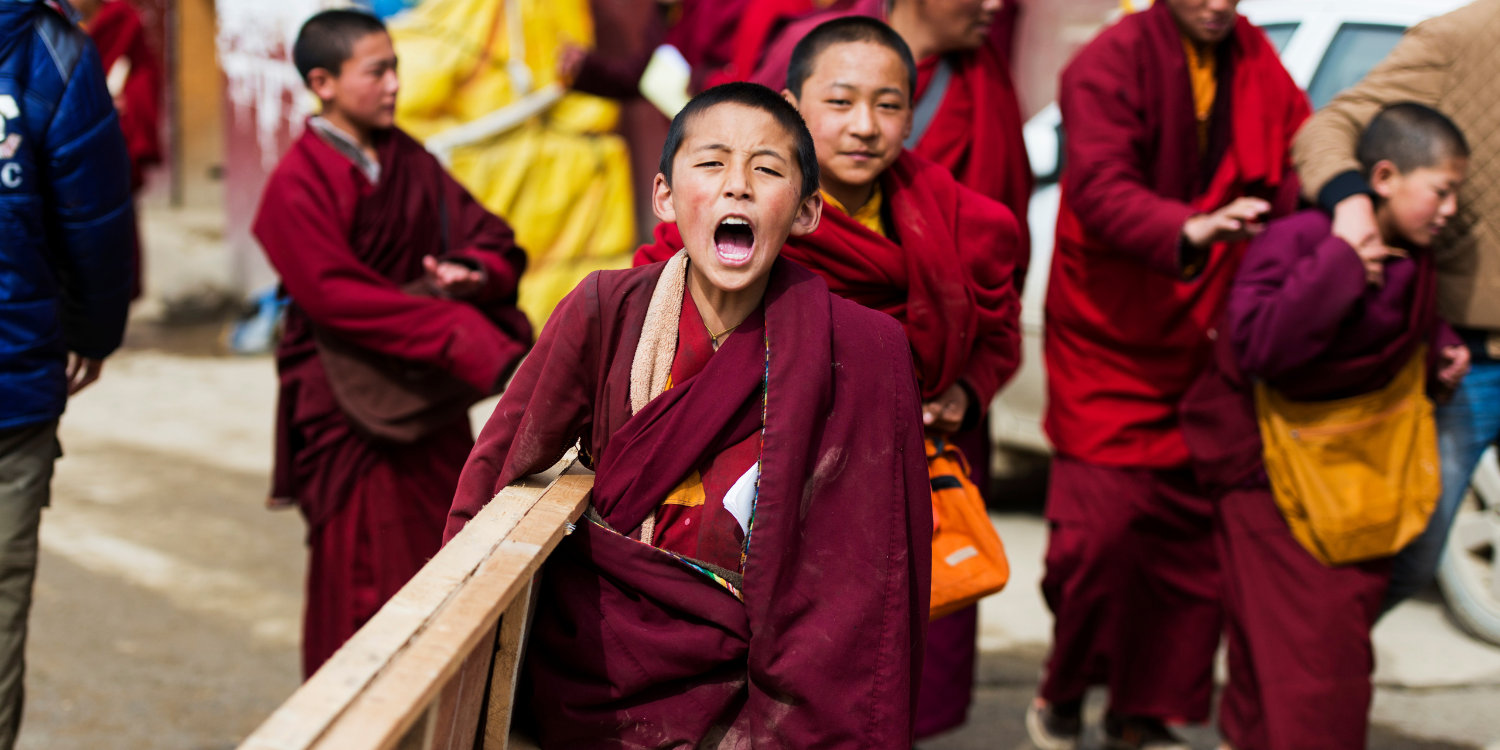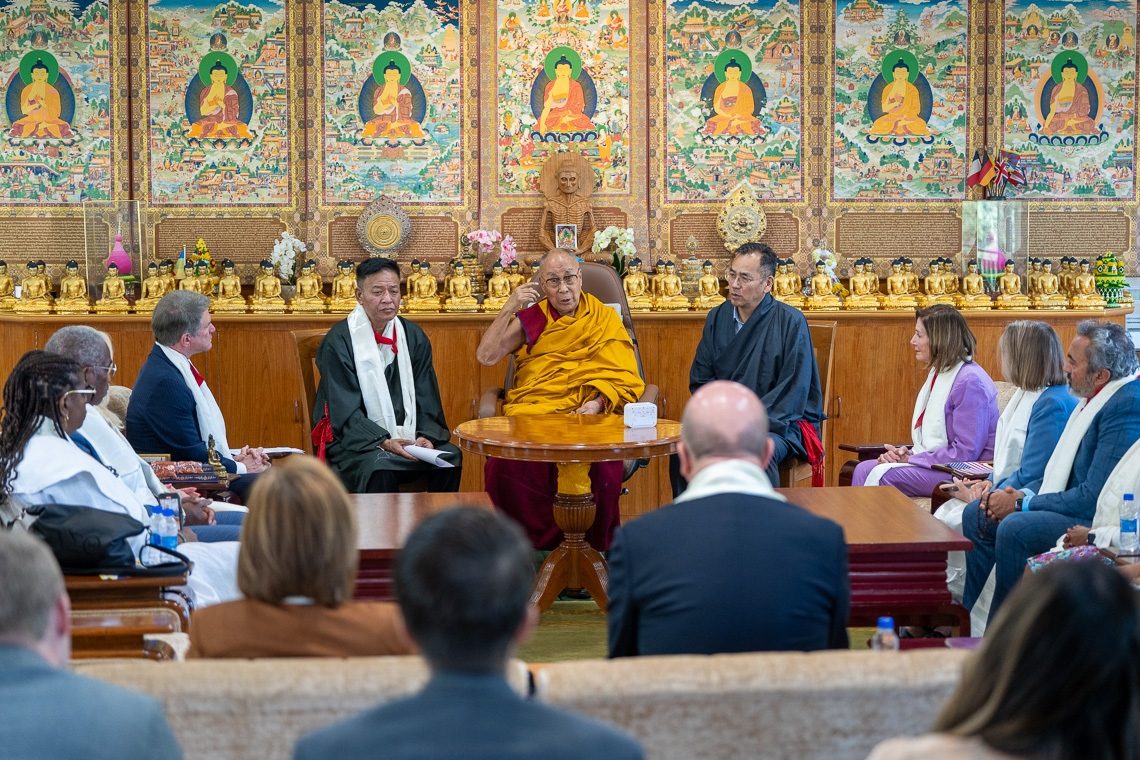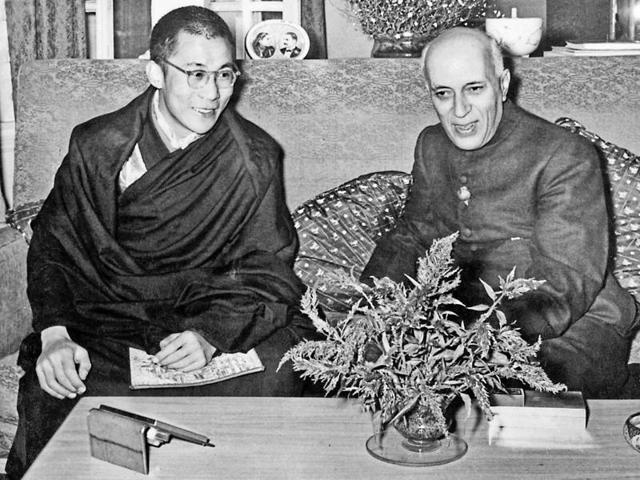
Over the past some time, writing commentary on foreign policies has been a delightful job of mine. On most if not all occasions, I have been praiseworthy of India’s foreign policy, which has been more assertive and proactive on most fronts. But, one policy area popped into my mind, where I think, India is still not clear with its stand…it’s its policy concerning the Tibet region. In this Blog, I will elaborate on New Delhi’s old and historic ties with Tibet, and how and where it is lacking today, especially in the context of China and changing world order.
India’s ‘official’ stand
Tibet is located just above Nepal, and actually, it’s the Tibet portion of China, that draws borders with India, even at the conflict region of LAC. The first major border treaty between India and the region happened in 1914 when the Tibetan representatives signed the Simla convention with British India. However, the deal was short-lived, as China, after annexing Tibet in 1950, repudiated the convention and the McMahon line, which divided the two countries (the MacMohan line dispute is the exact root of conflict at LAC).
In 1954, India formally recognized the ‘Tibet Autonomous Region’ as a region of China. But, when in 1959, following a massive Tibetan uprising in the China-occupied land, Dalai Lama and hundreds of his followers fled to India, the Jawaharlal Nehru-led government wasted no time in giving them refuge and even helped in setting up the Tibetan Government-in-exile. However, this also angered Beijing, which led to the 1962 Indo-China war resulting in a humiliating loss for New Delhi.
Now, the government of India’s official policy has throughout remained that the Dalai Lama is a ‘spiritual leader’ while China considers him a “separatist”. Also, the Tibetan community in India (over a lakh exiles) is not allowed to undertake any political activity, however, they carry out marches and events in full flow against Beijing’s actions in Tibet.
Shift in Policy amid border skirmishes
India, throughout the course of history, never tried to irk China by opening arms too wide on the Tibet issue. However, despite this, Beijing, since 2010, has regularly been trying to aggressively change the status quo at the borders in Ladakh with repeated border clashes. It is also challenging India’s sovereignty, by issuing ‘standard maps’ showing Arunachal Pradesh as China’s part and even to the extent of issuing staple visas for Indians from J-K and Arunachal. All this has forced New Delhi to tweak its policy on the Tibet issue.
In 2014, right after taking over as Prime Minister, Narendra Modi invited the head of the Tibetan government in exile in India, Lobsang Sangay, to his swearing-in ceremony. However, it is interesting to note that Mr Modi didn’t invite him again in 2019 or in June this year while taking oath.
Similarly, in 2023, Mr Modi wished Dalai Lama on his birthday, the first time since 2013, and his first time as a PM. This was a clear shift in India’s defensive policy in the wake of rising tensions at the border.
But in 2018, just ahead of the informal meeting between PM Modi and Chinese President Xi Jinping, Indian officials were directed not to attend the celebrations organised by the Tibetan government in exile marking 60 years of the Tibetan uprising against China, following which the event was moved out of New Delhi to Dharmsala.

The Tibetan culture is under constant attack by China which wants to fully impose itself (Photo: Free Tibet)
The suppression and cleansing of Tibet by Bejing
Ever since it annexed Tibet in 1959, China has been hell-bent on imposing its culture, curriculum and lifestyle on Tibetans. China is encouraging people from mainland China to migrate to Tibet to change the demography in its favour. Several huge infrastructure projects, which local Tibetans have opposed citing environmental concerns, have moved ahead in the region despite resentment (if such a word exists in China)
Several experts consider Tibet as a distinct entity, that has remained separate from China for most part of its history dating back to at least the 6th century when the Yarlung dynasty established the historical Tibetan Empire. China’s claim to Tibet rests on the period between 1720 to 1912 when Tibet was forcibly occupied by the Qing dynasty (the forerunner of modern China). So, considering all this, some experts believe that Tibet has never been an integral part of China.
However, the main tension between China and Tibet arises over the issue of Dalai Lama. As I have explained in detail in one of my previous blogs, the Dalai Lama is the spiritual leader and head of Tibetan Buddhism. It is chosen by a spiritual and holy process. China has been aiming to somehow appoint its own Dalai Lama, someone who propagates Beijing’s thought process among Tibetans. China even abducted the Panchen Lama (second in command to Dalai Lama) trying to force its way on teh Tibetans. However, any such attempts have borne fruit so far, as Tibetans have been steadfast against any forced narrative on their spiritual thought.
The current and 14th Dalai Lama, Tenzin Gyatso is 86 years old and has not named any successor. With this, discussions have been making rounds not just on the future of Dalai Lama but also on Tibet. So, at this point in time, it becomes important for China (of course) and any other country which wants to be a part of this narrative exercise (including India) to be in firm control of the situation.

The US delegation with Dalai Lama in Dharamshala, India (Photo: Dalai Lama website)
Role of US in Tibet and Delegation Visit
A bipartisan delegation from the US visited Dharamshala in June this year, where they met Dalai Lama, abused China and reaffirmed their so-called commitment to Tibetans (the US also claims commitment to Ukraine and Taiwan just so you know). This visit came right after the US Congress passed the ‘Promoting a Resolution to the Tibet-China Dispute Act.’ This legislation which aims to support Tibet and criticize and highlight Beijing’s treatment of Tibetans, was later made into law after being signed by Joe Biden.
The fact that this delegation exercise was carried out, or should I say, allowed to be carried out in the heart of India, shows volumes about the stern message New Delhi wanted to send to Beijing amid tensions. It is important to note that Foreign Minister Jaishankar hosted a dinner for the delegation and Prime Minister Modi met it the other day. So it’s clear. However, experts believe that this exercise did little to help India’s cause and instead brought the US (comparably further power) to the spotlight.
But, here exactly is the problem. Experts are of the opinion that with this exercise, India instead gave the US a grand space to emerge as the voice of Tibet that too using, Indian land. If it was all happening with India’s consent (surely it was), then why was it, not India directly giving the message, instead of sitting in the back seat.
A pertinent point is days after the delegation visit, Dalai Lama travelled to the US for medical treatment, and this whole program and meeting of US lawmakers could have easily happened there. But, yet the whole US-centric event was held in India making it all of a missed opportunity for India.
Jawaharlal Nehru with Tibetan leaders after region was annexed by China in 1950 (Photo: Hindustan Times)
‘Hypocrisy’ in India’s stand
Now, just before I conclude, I would like to put up a very important but often ignored point. If you’re aware, India often accuses several countries, especially Canada of giving space to ‘anti-India’ Khalistani elements in their country, terming it an attack on “India’s sovereignty”. The underlying thing is the so-called Khalistan movement (which has no relevance today) calls for carving out a separate country from the Indian state of Punjab. So, going by this same logic, isn’t it an attack on China’s sovereignty as well, when India gives space, quite openly so, to Tibetan groups, uprisings and these delegations.
This is keeping in mind, that India, the US or no one to be precise, considers Tibet a separate country or any autonomy for it. It is very well considered a part of China (though it was annexed) under the ‘One China Principle’ accepted both by India and the US. So, even though many might not like it, it really really hypocritical of India to sound alarm bells when Khalistani or other “separatist” elements are given space overseas, but give a red carpet platform to a group which is considered “separatist” by China.
The Many Complexities and need for change
Now, several other points call for India to tweak its stand. Notably, India doesn’t give citizenship to Tibetans born in India after the cut-off year of 1987, which has left the Tibetan youth dissatisfied with India. Secondly, the United States has now started showing more interest in the subject for the past few years; accepting more Tibetan refugees attacking China more heavily on the issue. This means India is no longer the sole entity voicing on the Tibet issue.
All of this becomes all the more important as there are speculations about Dalai Lama’s future. Once the current one passes away, if there is no successor, the whole Tibetans-in-exile group might be void of leadership and voice, and that will require a big country to take a decisive role. So, New Delhi has to avoid a situation where it has a young and restive Tibetan population residing in India, but looking outside for its leadership and command structure after the Dalai Lama has passed.
At the same time, Tibet is a ‘card’ that New Delhi needs to use skillfully against Beijing, as the latter continues to remain unfazed in its blatant disregard of all border agreements, sovereignty and even basic manners to say the least.
So, India has to decide what stand it has to take. Even after what I pointed out in the above section, hypocrisy is not a crime in the world of ‘realpolitik’. Even if India has to take an aggressive stand, being fully on Tibet’s side, it has to be absolutely firm and concrete on it. While, if it wants to take the defensive route of not irking China, as was the case for the past many years, it can’t afford to give space to US and Tibet groups attacking China on Indian land (they better do it in their own backyard). The stand, as I said need not have morality, but need to have clarity and of course be in the national interest.


